


To reach our Seafarers ISSUE 82 DECEMBER 2022 IN THIS ISSUE Company News 2 Message from the Management 4 Cenmar Manila: Office and Staff 5 Implementation of New EEXI and CII Regulations 6 Maritime Security Developments 11 Safety First 12 Nostalgia 14 Mental Well-Being 16 Voices from the Fleet 18 The Tasman Sea 22 Survival at Sea 24
In this issue of Wavelength, many of the articles bring to the surface one of the buzzwords of the modern, post-pandemic world. The word in question is “challenges”, which seems to have invaded references to current political situations and business models at unprecedented levels. However, unlike numerous challenges referred to on news platforms, those mentioned in this quarter’s contributions come with viable solutions.
In the Technical submission, for instance, a new contributor, Konstantina Foudouli, highlights the challenges associated with regulatory Green House Gas Reduction Strategies and identifies cooperation and collaboration as ways to overcome them. Another first-time contributor, George Koutroubousis, focuses on the long-standing issue of piracy. In his Marine Operations piece, he emphasizes that proven deterrents and a chronic awareness strategy should be deployed at all times so as to mitigate the risks posed by piracy hotspots changing location.
As regards other safety measures, the Safety First section describes the tools available which allow for work schedules on board to be conducted as safely as possible. These tools, which are mainly the product of leadership initiatives and crew feedback, serve to mitigate risk in what can prove to be a potentially dangerous working environment. Additionally, this section reinforces the importance of communication in the adoption of equipment suggested by crew members to further enhance safety. From another perspective, the Voices from the Fleet section provides a
valuable glimpse into onboard activities. The contributors, Marvin Page and Jayson C. Padilla, pinpoint teamwork, a good working environment, safety tools and PPE as being vital to seamen who need to address the challenges they face.
Of course, it is all very well having solutions to challenges, but their successful implementation ultimately depends on behaviour patterns determined by mental well-being. In the section of the same name, active learning is cited as one of the ways to achieve a level of well-being that will ensure safety measures are used as effectively as possible. With all this in mind, it can be safely concluded that leadership, collaboration, cooperation, teamwork and communication, all of which are underpinned by mental well-being, are key to addressing the challenges posed in our industry. I would like to thank all the contributors to this installment of Nostalgia, which has once again brought to the fore the importance of family. Their stories, like those in the two previous issues, are from the heart and I am sure that readers will identify with the feeling with which they were written.
I sincerely hope that you enjoy this issue of Wavelength. If you have any comments, suggestions or questions regarding the content, please do not hesitate to contact me at contact@wavelength.gr.
Best wishes, Nick Seaman
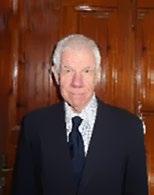
COMPANY NEWS
CENMAR Manila Forum 2022
An exciting event took place from 6th-8th December 2022 in Manila, Philippines, where our CENMAR Forum returned to its physical format after the pandemic. Spending three days with about 60 Officers and crew from Philippines and India was overwhelming. Furthermore, it was the first time that the Manila Forum was broadcast live to all seafarers around the world, something that was both novel and challenging.
Disclaimer: The contents provided herewith are for general information purposes only and are not intended to replace or otherwise contradict the detailed instructions and procedures issued by the owners, managers, flag etc. The articles presented and the views expressed in the bulletin do not necessarily reflect those of the publishers. Editor: Nicholas Seaman • Email: contact@wavelength.gr • Design-Production: www.remdesign.gr
 Dear seafarers,
Dear seafarers,
Editorial
2 Issue 82-December 2022
all
so
“actors”
but not least, our CENMAR Manila staff.
Partners in Safety Conference

Our Company participated in the Athens Maritime Partners in Safety conference, which took place in early October. The conference was attended by some 120 delegates, and was broadcast live over YouTube, thus reaching many more. Along with fellow partner companies, Enesel and Maran Gas, we were requested to prepare a 2½-hour presentation on “How You Respond to Failure Matters” – one of the five Principles of Human Performance. We prepared a role playing video, plus presentations, exercises and open discussions. Our Company was represented by COO, A. Lambros, DPA/SQE Manager, E. Moretti, Marine Manager, Y. Romanidis, Deputy DPA, D. Fakiris, and SQE Coordinator, A. Malegou, in what was overall considered a very successful conference. Here are four stills from the video.

COMPANY NEWS 3 Issue 82-December 2022
We will revert in the next Wavelength issue with more photos and information on the event. Until then you will be able to access the full event on our YouTube “Marine Trust Ltd” channel, along with some interesting videos created by our Company. We wish to thank
those who worked
hard to prepare this event and the accompanying videos : the Forum organizing committee, the production team and
for our videos, all the speakers / presenters (live and remote), the camera crew, our tireless office ICT staff and last,
Embracing the Tides of Change
– a message to
all
our seagoing and shore staff


A nother year has passed. Just when we thought it was getting easier, things got difficult again – especially for our friends and colleagues from Ukraine. We have tried our best to continue supporting them in these trying times, and we hope that this ordeal will soon be over so that they’ll be able to return to their country and rebuild their homes, their lives, their hopes and dreams.
A few weeks ago we were in Manila for our Forum – the first physical one in three years. Change. It was a hybrid event, with simultaneous broadcasting over zoom and YouTube, which introduced another change.
We felt the warm embrace of our people in a manner that I for one have never felt before. Maybe it was the three years, or maybe it was all that had transpired during these years – I cannot be sure, but it definitely felt different. I urge you to take some time when you can and have a look at the proceedings – apart from being able to follow some interesting presentations, you’ll get the feeling of an atmosphere of trust, care and respect.
Our Forum was titled “Embracing the Tides of Change”. This is the main message we wanted to get across. We live in a world that is constantly changing, and our future depends on how well we adapt, respond to and cope with these changes. The financial crisis, the pandemic, military conflicts, social unrest, regulations, technology, the environment; everywhere we look and every aspect of our lives has one parameter in common: Change.
The words of the Greek philosopher Heraclitus from 2500 years ago are all too relevant today: “everything flows” and “the only constant in life is change”.
I would add one more thing that is also a constant in life: Fear. People are afraid of change and have an instinctive tendency to resist it. We are naturally afraid of change, of being judged, of being different, of being left out, of taking initiatives, of making mistakes (even though they are a normal part of life), of speaking up, of being talked about, of leaving our comfort zone. I feel that all these fears are holding us back, and we need to remove them from our lives. It is not easy, so it is ever so important that those in positions of responsibility create an environment of trust in which we can help our colleagues to get rid of these fears.
We have come a long way together, and I thank you for your efforts, your resilience, your patience and your loyalty. We are growing, we are changing, we are evolving and we are doing this together. We have the ability to advance further, to improve, and to become even safer than we are.
• Let us all try to be the best version of ourselves.
• Let’s give it our best shot.
• Let’s continue showing care, attention, respect and passion for our everyday jobs, for our colleagues and for ourselves.
• Let us Embrace Change!
I wish you all a happy festive season and a Healthy, Safe and, most of all, a Peaceful New Year.
Anthony Lambros
ΜESSAGE
THE MANAGEMENT
FROM
4 Issue 82-December 2022
Century Maritime Agencies Inc.
(Cenmar Manila)
Cenmar was established back in 1997 in Metro Manila, Philippines, one of the busiest capitals in the world. It was the Company’s first manning agency. Initially, it was comprised of 4 employees. Among them was today’s General Manager, Ms. Johanna Durana. Throughout the years, Cenmar has grown and expanded, resulting in a current total of 19 staff members. Considering the fact that 7080% of the seagoing staff are recruited through the Philippines, Cenmar Manila is the busiest manning agent of the Company, with an estimated 90 crew deployments per month. Since the beginning of the pandemic, operations have become a lot harder, with the Philippines experiencing large waves of positive cases and implementing strict laws. The situation still remains. Nevertheless, Cenmar staff have stood up to the occasion, with hard work and dedication, thus managing an uninterrupted supply of crew onboard Company vessels. As the Fleet is expanding, Cenmar continues to adapt and expand, while catering for the needs of onboard manpower at all times.

Onboard Promotions
During the third quarter of 2022 seventeen of the Company’s Seafarers were promoted. The list of those who received a promotion along with their vessels and promotion details in chronological/alphabetical order appears in the table below.
All those on the list are to be congratulated on their recent promotions. Again, the list includes seamen who are ascending the first rungs of the promotion ladder, those higher up and one, who has reached the top rung. Despite the differences in the distance travelled along their respective career paths, these seamen have demonstrated that they have the ability and dedication necessary to succeed. Moreover, judging by the contributions made to
CREW DEPARTMENT
Wavelength by individuals on the list which reveal an enthusiasm for the seafaring life and gratitude
the
the ratings and
fleet vessels. We wish all our
safe voyages,
safe
Date of Promotion Name Vessel Promotion Details 07.07.22 MAYNOPAS Elbert MERBABU WPR to ASE 12.07.22 BABAN Rocky KAPSALI 4/E to 3/E 21.07.22 MD Gufran Anwar MERBABU TNO to 3/M 01.08.22 OFTANA Bernie PSERIMOS E/Tr. to WPR 01.08.22 SOTTO Joseph SERENO C/Tr. to A/C 03.08.22 JUATON Edgar Charles APAGEON ASD to 3/M 05.08.22 BASILIO Mark Anthony SMYRNA E/Tr. to ASE 08.08.22 PAGE Jomar PSERIMOS 2/M to C/O 09.08.22 DEMELLITES Eldred CALLIOPE P. C/O to MSTR Date of Promotion Name Vessel Promotion Details 09.08.22 PAGE Marwen CALLIOPE P. 3/E to 2/E 12.08.22 PRAKASH Mayank MERAPI TME to 4/E 17.08.22 VILLARUEL Ralph Nevin SMYRNA 3/M to 2/M
NAYAK Premchandra GEORGE S. 4/E to 3/E
ANAND Dharmesh MERAPI TNO to 3/M
KUDIN
SERENO APR/ETO to ETO
SUNDARAM Madhu AGIOS NIKOLAOS 2/M to C/O
NICOLAS Nathaniel DUKE E/Tr. to ASE
for
feeling of family that the Company offers,
officers on the list have a bright future aboard
Seafarers
a
return to their loved ones, and thank them for their hard work.
01.09.22
16.09.22
20.09.22
Yevgenii
28.09.22
30.09.22
5 Issue 82-December 2022
Implementation of New EEXI and CII Regulations
Introduction
 By Konstantina Fountouli
By Konstantina Fountouli
In the last decades, the IMO has introduced a Green House Gas Reduction Strategy that aims for zero emissions from ships by the end of this century. In order to achieve this goal, IMO has imposed some short-term measures, including EEXI and CII regulations, mid-term measures like a CO2 tax and long-term measures of zero-carbon or fossil-free fuels. EEXI is one of the first of the new environmental regulations that will enter into force in 2023.

Figure 1: IMO's GHG Reduction strategy
What is the EEXI Regulation?
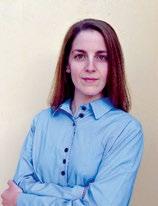

EEXI is acronym for Energy Efficiency Existing Ship Index and it is introduced as a technical measure to evaluate the energy efficiency of existing ships. Attained EEXI needs to be equal or less than the Required EEXI. Attained EEXI is calculated based on a vessel’s capacity, the power of the Main Engine, its specific fuel consumption, the fuel in use and attained speed. Ships with EEDI (Energy Efficiency Design Ship Index) can use the attained EEDI value as their attained EEXI value. Required EEXI is calculated according to the IMO’s formula for each vessel’s type and size.

Attained EEXI ≤Required EEXI
Figure 2: Required EEXI for several ship types
The EEXI regulation applies to all ships of 400 GT and above which were contracted before 1st January 2022. Vessels are required to comply with the EEXI regulation by the first annual, intermediate or renewal of the International Air Pollution Prevention Certificate on or after 1st January 2023.
TECHNICAL
6 Issue 82-December 2022
Ways of Compliance
So what about the vessels that don’t meet the requirement? Attained EEXI can be improved by using various energy saving technologies. However, the greatest impact can be made by using a power limitation in the form of Engine Power Limitation (EPL) or Shaft Power Limitation (SHaPoLi), as suggested by the IMO.
Energy Saving Technology
There are three Energy Saving Technology categories as defined by the IMO:
Category A: Technologies that will increase the vessel speed at constant propulsion power such as low friction coating, propulsion improvement devices, Mewis duct, partial duct, SAVER Fins and rudder bulb, already fitted on some of our vessels, belong in this category.
Category B: Technologies that will reduce the propulsion power at vessel speed, but will not generate electricity such as hull air lubrication, wind propulsion are in this category.
Category C: Technologies that will generate electricity such as a heat recovery system and photovoltaic are included in the third category.
As mentioned above, energy saving technology can improve the attained EEXI, but in most cases, it is not possible to achieve compliance without a power limitation.
Power Limitation


As defined by the IMO, overridable power limitation is a verified and approved system for the limitation of the maximum engine/shaft power by technical means that can only be overridden by the ship’s Master or the Officer on watch for the purpose of securing the safety of the ship or saving life at sea.
The power reserve, i.e. the power above the limited power, cannot be used in normal operation, but only for the purpose of securing the safety of the ship like in adverse weather conditions or navigating in piracy waters, and for the purpose of saving life at sea. In cases when the power reserve is used, the power limitation needs to be applied again as soon as the vessel sails in safe waters. The power limitation can be applied in the form of an Engine Power Limitation (EPL) or a Shaft Power Limitation (SHaPoLi)
3: Engine Load Diagram on Shaft/Engine Power Limitation
Engine Power Limitation (EPL)
Engine Power Limitation is applied differently on mechanically and electronically controlled engines. In both cases, the governor settings also need to be adjusted to match the limited power.
For mechanically controlled engines (MC, MC-C engines), EPL is a sealing device which can physically lock the fuel index by using a mechanical screw sealed by wire or an equivalent device with a governor limit setting so that the ship’s crew cannot release the EPL without permission from the ship’s Master or Officer on watch.

Figure 4: EPL for mechanically controlled engines
 Figure
Figure
7 Issue 82-December 2022
For electronically controlled engines (ME-B, ME-C engines), EPL is a fuel index limiter which can electronically lock the fuel index or direct limitation of the power in the engine’s control system so that the ship’s crew cannot release the EPL without permission from the ship’s Master or Officer on watch.
Figure 5: EPL for electronically controlled engines
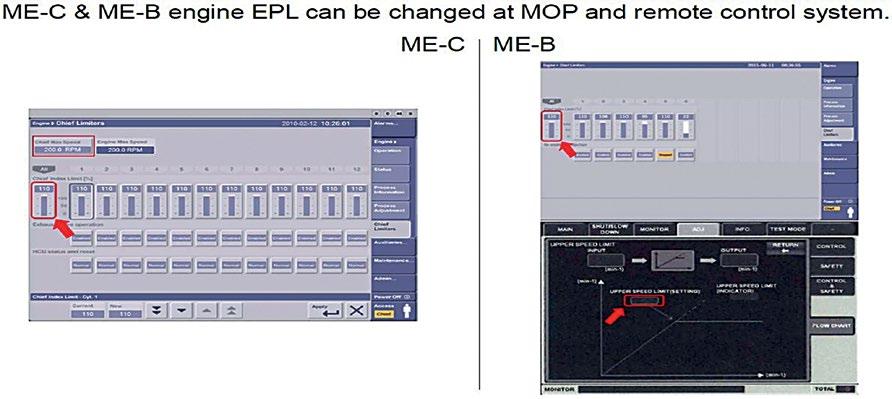
Shaft Power Limitation (SHaPoLi)

The Shaft Power Limitation system (SHaPoLi) consists of the following components:
• sensors for measuring the torque and rotational speed delivered to the propeller of the ship
• a data recording and processing device for the tracking and calculation of the data


• a control unit for the calculation and limitation of the power transmitted by the shaft to the propeller.
According to IACS Guidelines Rec.172, the SHaPoLi system can be applied without automatic power limitation functionality. In this case, the SHaPoLi system consists of the following two parts:
• a shaft/power torque meter with a display unit in the ECR
• a SHaPoLi display unit in the wheelhouse, including a SHaPoLi module that is recording, processing and calculating as well as informing the ship’s Master or Officer on watch clearly and conspicuously when the ship’s shaft power exceeds the limited shaft power.
Figure 6: Typical layout of a SHaPoLi system
There are some significant advantages of the SHaPoLi system over the EPL system:
• SHaPoLi has no interference with the engine control system.
• It allows for an instant use of power reserve by the crew on the bridge. There is no need to remove any component such as the mechanical stopper used for Engine Power Limitation (EPL).
• The actual power of the M/E is available on the bridge in real time enabling the Master or Officer on watch to take a decision accordingly.
8 Issue 82-December 2022
TECHNICAL
• With some add-ons, the SHaPoLi system can also be used for vessel performance monitoring, Greenhouse Gas emissions and CII monitoring.
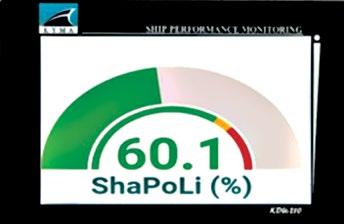
Based on the above mentioned advantages of the Shaft Power Limitation (SHaPoLi) over the Engine Power Limitation (EPL), our Company has decided to apply the SHaPoLi method on our fleet
Implementation


The basic steps that are required for the implementation of the EEXI regulation are as follows: First of all, the attained and required EEXI values need to be calculated. If the attained EEXI is greater than the required EEXI, then a power limitation needs to be applied. The percentage of the Main Engine’s MCR that needs to be limited is calculated so that the attained EEXI with the limited power becomes equal to or less than the required EEXI. Then, a method of power limitation, as mentioned above, is selected. When the method is applied on board, an EEXI Technical File is prepared and submitted to the Class for approval. In the EEXI Technical File various information required for the calculation of EEXI is given, including the vessel’s particulars, the new limited power of the Main Engine, the method of power limitation applied and the new maximum speed attained with the limited power.
Figure 7: Example of EEXI calculation results

The EEXI Technical File is first approved by the Class and then verified in a one-off survey onboard by a class surveyor. The EEXI Technical File will then remain onboard, indicating the vessel’s compliance with the EEXI regulation together with an Onboard Maintenance Manual (OMM) provided by the power limitation system vendor.
Operation
After the first annual, intermediate or renewal survey of the International Air Pollution Prevention Certificate (IAPP) within the 2023, the vessels will be required to sail using the limited power of the Main Engine for normal operation. The power reserve can only be used for emergency cases like adverse weather conditions, navigation in piracy areas and saving life at sea. As soon as the vessel overcomes the danger, the power limitation needs to be applied again and the usage of power reserve together with a justification needs to be reported.
In the case of SHaPoLi, the Master or Officer on watch will have to make sure that the vessel sails using only the limited power at normal operation. The range of available power will be clearly indicated on the wheelhouse display and the user will be notified in case the shaft power exceeds the limited power. The shaft torque and power as well as the time and date will continuously be recorded by the system in order to ensure compliance with the regulation.
Upcoming regulations – CII
Figure 8: Example of the power idication of a SHaPoLi display unit on the bridge
Starting in 2023, an operational measure for the reduction of Green House Gas emissions introduced by the IMO will also enter into force. The Carbon Intensity Indicator (CII) will be calculated annually starting from 2023 and it will be compared with the reference line provided by the IMO. Based on the results of this comparison, the vessels will be assigned with an A, B, C, D or E rating every year. Vessels with ratings A, B and C will comply with the regulation but vessels with a D or E rating will have to take measures to improve their CII.
Figure 9: CII rating boundaries

9 Issue 82-December 2022
Attained CII is calculated based on the vessel’s capacity, annual fuel oil consumption and distance travelled and it is measured in gCO2/dwt-mile. Calculation formula is as per below:
The calculation of Attained CII will be based on the official Data Collection System (DCS) data reported to the IMO. Correction factors will be applied in the above formula for adverse weather conditions and short voyages. CII is considered an operational measure for the reduction of Green House Gas emissions because it is affected more by the operational profile of the ships than their technical efficiency.

The Required CII is calculated based on the reference line provided by the IMO for each vessel type. The Required CII value will be reduced every year by 2% for the first 3 years and for the following years the reduction factors remain to be announced. Four boundaries are set based on the distribution of CIIs of individual ships in 2019 forming five possible ratings: A, B, C, D and E. The four boundaries are pre-determined, which means that the achieved rating of a ship will not be affected by the rating of other ships.
The attained CII and resulting CII rating will be re-evaluated every year. The target CII rating is C and vessels achieving A, B or C will comply with the requirement. Vessels rated D for three years in a row or rated E will have to take measures to improve their CII rating. The detailed implementation plan to achieve a better CII rating will be included in each vessel’s SEEMP Part III. SEEMP Part III is required to be available on board by 1st January 2023.
The reduction factors for Required CII are set at levels to ensure the reduction of CO2 emissions per transport work by at least 40% by 2030 compared to 2008. In order to achieve this goal, Required CII will be reduced every year, so compliance with this regulation is expected to become more difficult as the years go by.

Figure 11: Reduction factors for Required CII relative to 2019
The Attained CII will be first calculated by the end of 2023 and the achieved rating will be based on the operational data of all voyages performed in that year. Starting in January, every voyage travelled will contribute in the vessel’s CII rating at the end of the year. In order to achieve compliance with the CII regulation, internal collaboration between Company departments is required together with collaboration with the charterers. Better performance will be expected by the ships every year which is going to be a great challenge for all ship owing companies.
In order to keep up with EEXI, CII and the rest of the upcoming environmental regulations, we need to be dedicated to continuous improvement and remember that collaboration is the true fuel of the future.

Figure 10: Vectors for calculation of Required CII and CII rating boundaries

������������������������ = �������������������������������� ����������������2 �������������������������������������������������������� ���������������������������������������� ������������������������������������������������������������������������ �������������������������������� = ������������������������������������������������ �������������������������������� ���������������������������������������������������������������������������������������� ����������������2 ������������������������������������������������ ������������������������������������������������ ���������������������������������������������������������������� ������������������������������������������������������������������������ ����������������������������������������������������������������
10 Issue 82-December 2022
TECHNICAL
Maritime Security Developments: New Threats and Best Practices

The International Ship and Port facility Security (ISPS) code entered into force under SOLAS chapter XI-2, on July 1st 2004 to safeguard and manage the maritime security of ships and port facilities. Notwithstanding the initial skepticism in the shipping industry, the ISPS code evolved into a fundamental element of a ship’s day to day operation. Piracy revival in the Gulf of Aden and the Indian Ocean in 2008 led to the development of the ISPS code mainly as “anti-terrorism” focused code. Piracy in the Indian Ocean has been heavily suppressed during the last 5 years after numerous tragic events (hijackings, crews held captive for several months, crew deaths, ransoms for freeing crew etc). Unfortunately, new areas of threats are emerging continuously across the globe and include among others: terrorism, acts of theft/robbery, drone attacks, unstable political regimes, massive migration attempts and stowaways on board.
The Ship Security Plan (SSP) is the primary guide for security control on board. It is specifically formulated for each ship to ensure that security measures are applied onboard to protect the ship’s crew, equipment and cargo from any security-related risks. Additionally, plans and procedures have been implemented to deal with the evolving threats and high sea transit in Piracy infested areas. These are the Anti-Piracy Plan, theVessel Hardening Plan (VHP) and the Company Security Plan.
The frequency and severity of attacks is diminishing in certain areas. The Indian Ocean and the Gulf of Aden’s characterization as areas of “additional war risk” has been significantly shrunk by Underwriters. However, new areas of security threats and new methods of security breaches are emerging continuously. So, it is of paramount importance to remain vigilant at all times and implement the security measures laid out in the SSP.
The most effective piracy deterrent throughout this period of evolving threats has been the proper fortification and fencing of the vessel. Hardening the ship demonstrates the preparedness and vigilance of the ship’s crew from far away. The layers of razor wire at the ship’s side can deter the attackers, irrespective of the presence or not of armed guards and /or a security escort vessel.
Fencing can be installed in various ways. BMP5 (Best Management Practices to Deter Piracy and Enhance Maritime Security in the Red Sea, Gulf of Aden, Indian Ocean and Arabian Sea) recommends a double row of high tensile concertina razor wire with coil diameters of 730mm or 980mm. An example of a razor wire installation can be seen in the attached photograph.
 By George Koutroubousis, CSO
By George Koutroubousis, CSO

Three rows of razor wire properly strengthened using wooden poles and seizing wires is the primary layer of defense against any piracy boarding attempt. Razor wire must be handled with extreme caution and only after donning the appropriate personal protective equipment. Gloves and hooks are required to avoid hand injuries. Vessel has to be sufficiently equipped with antipiracy material (according to the Vessel Hardening Plan, section 5) and associated protective equipment at all times. In addition to the proper installation of physical barriers, crew vigilance is of paramount importance and may avert a security breach in piracy infested waters such as in the wider Singapore area.
Complacency in maintaining the required security measures may lead to incidents even in the lowest risk profile ports: kidnappings, injuries to crew members by intruders, petty theft, stealing from a ship’s stores, stealing equipment, the boarding of stowaways, and using a vessel as a means of trafficking illegal substances, are among the many security threats that could occur anywhere in the world if relevant precautions are neglected. Such incidents may have severe repercussions not only on the Crew’s physical integrity, or the loss of stores and personal belongings but also on the tradability of the ship in many ways.
Maintaining a secure vessel requires the whole-hearted participation of the ship’s crew and office personnel. Regular safety drills and safety meetings are essential, procedures are to be followed diligently and security plans improved through the continuous process of adjusting to new threats.
Wishing you safe and secure voyages!
MARINE OPERATIONS
Screenshot from NAVTOR’s Navtracker, indicating numerous recent incidents in Singapore area
11 Issue 82-December 2022
SAFETY FIRSΤ!
MESSAGE FROM THE DPA:
from the SQE Department
“Context drives behaviour – OUR Safety Culture Tools”
Dear seafarers,
Over the years, our efforts to enhance the Company’s safety culture have led to the development of several “tools”. These tools are always relevant and never outdated. If used routinely and correctly, they can change our behaviour towards Safety.

I wish you safe voyages and a safe return home, Elli Moretti
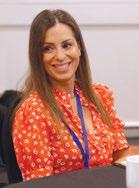
1.
STOP, TAKE 5 poster – LMRA card


Is it always in your coverall’s front pocket? Do you use it during a tool box talk at the job site? Or when you have a task and you are alone? With a mental Last Minute Risk Assessment you can:
- Enhance your SITUATIONAL AWARENESS

- Be ALERT - Be in a state of CHRONIC UNEASE
2. SWO – Stop Work Obligation
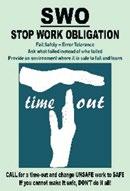
Is it always in your coverall’s front pocket? Do you feel free to speak up? Can you spot Unsafe Conditions and Weak Signals? With your SWO card you can:
- Speak up and INTERVENE
- Enhance our NO BLAME CULTURE - Spot WEAK SIGNALS
3. PPE Matrix: “Today choose all the right PPE!”
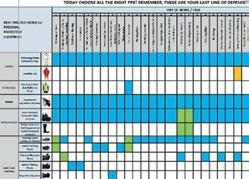
Is this poster on your cabin door? Do you discuss about PPE during your Daily Work Planning Meeting? With your PPE Matrix you can:

- Be PROACTIVE - Become FAMILIAR - Remember PPE is your LAST LINE OF DEFENCE

4. Nine Life Saving Rules – 9LSR & 5. Visitors’ General
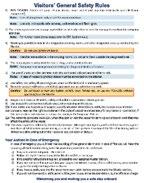
Safety Rules
Are these posters prominently displayed in various places in the accommodation? With these you can:
- Promote your personal SAFETY onboard and ashore
- PREVENT accidents of persons not familiar with life onboard
6. LOTO – Lock Out / Tag Out

LOTO is a set of SAFEGUARDS and additional safety BARRIERS that are used to ensure all equipment relevant to a task is shut down, inoperable, and (where necessary) de-energized. This allows maintenance and repair work on the system to be performed safely.
These tools are the “Context” that can help you change your and your colleagues’ “Behaviour” towards Safety.
12 Issue 82-December 2022
Fatal fall from a ladder
Source: BSAFE Britannia P&I
An AB on board a product tanker suffered severe injuries after falling from a portable ladder while conducting maintenance work on the launching system for the ship’s free-fall lifeboat. Despite being administered first aid in the ship’s hospital, he tragically died three hours after the incident.

A lashing turnbuckle for the free-fall lifeboat was defective due to corrosion, and the securing pin was seized. The C/O informed both the bosun and the AB, who was to carry out the maintenance work, that the job would only involve the removal of the remaining rust and painting of the turnbuckle. The turnbuckle was in the aft of the lifeboat and could be safely reached from the upper deck. After safely completing this task, the AB noticed that the forward hook on the davit of the free-fall lifeboat needed lubrication with WD40 penetrating oil. The AB proceeded to the paint store, where the bosun was working, and asked him to assist him with the maintenance task on the forward hook by steadying a ladder he had positioned on deck below the lifeboat to reach the hook. HOWEVER:
- He did not have authorization for working aloft, as there was a 10 m/s wind.
- The C/O did not know about this task and no RA was carried out.
- The height from the deck to the hook was about 4.8 metres.
- The ladder was 5 metres in length and was equipped with rubber feet at the bottom of each leg.
- The ladder feet were significantly worn and neither was in firm contact with the deck.
- Despite the ladder being unstable, it was not secured by any other means.
- The bosun did not use his Stop Work Obligation (SWO) effectively.
The AB climbed up the ladder, reportedly not wearing any PPE. The bosun tried to stop him, but he nonetheless continued to assist by holding the ladder while the AB ascended. Having climbed part of the way up, the ladder suddenly slipped. The bosun was not able to hold the ladder, so the AB fell and ending up lying unconscious on his back on the deck.
TRUST: TEN Really Useful Safety Tips WORKING ALOFT
1. Assess the risks when planning a working aloft task.
2. Discussions during your ‘’Daily work planning meeting" can be very helpful.
3. When you are at the site of your task, use your LMRA card first!
4. When assessing the risks, consider fatigue, training, time pressures, procedures, workloads and environmental conditions.
5. Use guard rails, proper lighting and the marking of trip hazards.
6. Use all the proper PPE such as the above mentioned life vest.
7. Consider each individual person's experience.
8. Maintain high standards of safety when the ship is also in Drydock.
9. Take into account the possibility of emergencies occurring when planning a task.
10. REMEMBER! Working at heights is not only associated with working aloft, e.g. in a ship's mast or crane, or outboard, but also when working inside tanks or other enclosed spaces where there is a great risk of falling from one level to another.

The Best Practice selected during last six months was from Cpt A. Stellatos (from Capt. Md Moin Uddin Hassan)
“Working over the side, e.g. preparing gangway/pilot ladder, I noticed crew sometimes mistakenly do not wear safety harness with life vest to prevent both falling overboard and drowning. We connected 1pc safety harness with 1 pc life vest without any damage to any of them, sewing condemned harness part (for same strength) and kept near gangway, removing the chances of missing safety harness in hurry.”
Upon receipt of this suggestion at the office, we realized that this is something that we can buy and save the vessels the effort. Our PPE Matrix will be updated to include it, with instructions for it to be kept near the gangway.

ZERO ACCIDENTS
13 Issue 82-December 2022
Nostalgia
This is the third and final installment of ‘’Shipping runs in our Family’’. In the previous two issues of Wavelength, and in this one, it is quite apparent from their accounts that those who have followed in the footsteps of family members have not done so simply to please the family, or just to maintain a tradition. Instead, they have entered the world of shipping because they were truly inspired by a relative and regard their vocation as far more than an ordinary job. What is more, the stories below and those in the first two installments reveal how deeply appreciative the story tellers are of the Company’s attitude towards nurturing its own family members so that they can reach their full professional potential.
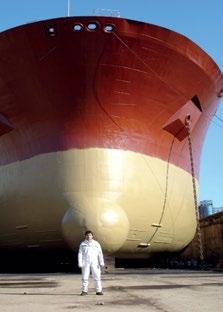

Dimitris Sarandis, Technical Reporting Supervisor

My father, Georgios Sarantis (1934-2000), was a Chief Engineer with 40 years seagoing experience. I believe that he enjoyed his job and he really liked the sea. From photos I have seen, he travelled almost all over the world, to exotic places, from South America to the Far East. He worked for many years for a Greek shipping company based in London, where I was born and my family stayed for a few years. He worked as a Chief Engineer, Superintendent Engineer and New-buildings Manager in Japan, where I also lived for some time although I do not recall any of it. There are only photos to remind me of this. While he sailed, I remember visiting him with my mother at Greek ports from the age of five. I really liked the vessels, the Engine room with all its machinery, the Bridge with the nice view, the comfortable and big cabins. I also enjoyed the food. Every time I visited my father on board, he would teach me something new, starting from the easiest and going to the most difficult. When I was in high school I accompanied him on some of his voyages for 1 month. Eventually, I decided to study Naval Architecture and Marine Engineering and become a Superintendent Engineer. After finishing my studies, I joined Centrofin Management Inc. in 2000 where I gained a lot of experience from repairs and new-buildings. Later on, I was involved in PMS, procedures, and energy & performance monitoring. What has made working for Centrofin Management Inc. a great experience is the family spirit and the very important elements of cooperation, communication and understanding.
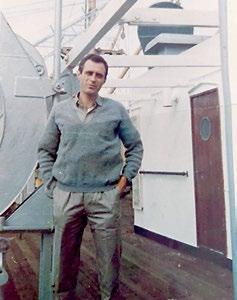
Nikos Stavrakis, Chartering Broker


My family has a long tradition in shipping and this is one of the main reasons that I followed the same path. I have not regretted it for a second. My grandfather moved from the Turkish coast to the small island of Oinousses (northeast of Chios Island) after the end of the Turkish-Greek war in 1922. During World War II he was trading olive oil and grains with small boats in the Aegean and East Med area. After the end of World War II he started sailing on ships. He had three sons, all of whom followed the same tradition. He also had one daughter. My father, Dimitris, became a Captain as did his brother Edouardos. After many years at sea, they started working ashore until they retired. The other son, George studied Naval Architecture and Marine Engineering in the UK and worked for many years as Technical Manager in big Greek shipping companies. I have heard many interesting shipping stories from my family that helped me a lot to get a better feeling and create a special relationship with this industry. There was an interesting case onboard a tanker where all the deck officers except for one were from my family, bearing the same surname. So, when the port authorities got the crew list they were very much surprised and would ask questions about it.The legacy my family left behind is big and I need to stand by it.
4/E JAROMAMAY Nino Ben
A seaman's life is tough and sometimes lonesome, without one’s family and far from friends. It is a profession that demands a great deal of patience and effort in order to remain away from your loved ones while still providing them with a comfortable existence. That being said, being a member of a family with three seafarers, I became one of them because they motivated me. Because of their desire to help our family and bring them out of poverty, they encouraged me to become one of them. My father, as my inspiration, encouraged me to pursue the seafaring career. He motivated me to do good for our family and to provide for my own. He is a diligent worker who holds a demanding position as a seaman. He is intelligent, which motivates me to learn and expand my knowledge. We all know that life at sea can be both difficult and dangerous; all seafarers must receive a solid education and acquire a thorough understanding of their ship before being allowed on board. He has served as an inspiration to me because his job necessitates a strong heart to deal with the rigors of life at sea. The fact is that my father is a true leader who inspires me the most. Truly, it's a challenging life, but it's also a social responsibility. We make personal sacrifices, in my opinion, to support our families who reside a long way from where we work.
Introduced and compiled by Chara Markatzinou
Mr. Georgios Sarantis travelling as Chief Engineer
Mr. Dimitris Sarantis, Technical Reporting Supervisor
14 Issue 82-December 2022
Mr. George Stavrakis, Nikos’s uncle, Technical Manager of Centrofin Management Inc. Mr. Nikos Stavrakis in front of M/T Kalymnos that was in for repairs in Skaramanga, 2004
Mrs Alla Dekhtyarenko, 4th Engineer
VARFOLOMEIEV Volodymyr & Apprentice Engineer
VARFOLOMEIEV Dmytro

Living in a historic maritime and port city, almost every family in Odessa is connected with the maritime industry. My story began in 2010, when I started studying Management of Organizations of Sea Transportation at the Odessa National Maritime Academy, the most popular and prestigious university in the south of Ukraine. While studying at the correspondence department, I was offered a job at the Department of Administrative and Criminal Law.
In 2011, I met my husband, Yuriy, who had acquired his Master's navigation degree. My husband's family is also connected with the maritime industry. Two of his grandfathers were Captains and worked on bulk carries. His father continues to work as a Captain on bulk carriers.


Due to my involvement with the Maritime Academy, we decided with my parents that my younger brother should also study there to become a seaman. In 2017, he received his diploma of specialist in automated control of technological processes and
D/CDT KHARE Nishad Rajendra
started his career as a seaman. I always dreamed of working for a big maritime company and my dream came true. In 2017, I started my career at Cenmar Ukraine LLC as crew co-ordinator. In 2019, my brother Volodymyr Varfolomeiev was also employed by our good Company as an apprentice engineer. Two years later, he was promoted to 4th engineer on M/T George S.


I am so glad to have the opportunity to work on this team.
My love for the Sea is not common but an inspired journey by my Dad, Captain Khare. The typical child always looked up to his Dad in terms of behaviour and professional and personal growth. His never-ending love for his work caught my eye and guided me towards sailing. Listening to countless adventures and extraordinary moments, developed my liking. Moreover, the uniform has its own spark, which not everybody can have, and I wanted to achieve that pride in wearing the uniform with the stripes. I do not prefer a mundane lifestyle and would look out for new thrills and excitement, which attracted me to joining the merchant navy.
A Merchant Navy Cadetship provides the highest level of training and experience to become the best officer you can be. Not only do you spend time learning both technical and practical seafaring skills, but you can also learn skills, and you can also learn skills for life such as team-building skills, resilience, and dedication.
In the Merchant Navy, you are tending to multiple opportunities of feeding your adventurous passions.From taking up challenges in the ocean to exploring distant lands, you work and enjoy your life at the same time. A merchant marine’s career is like a day-to-day adventure. It is a life of adventure out there.

Capt. Marvin R. Sagum, Master: MV SMYRNA
Whenever I look at these photos, I am reminded I was able to produce something good in this world. You make me proud of all that you have achieved and will achieve. We love you Chester!
Thank you Marine Trust Ltd. and Trust Bulkers Ltd. for making us grow together within the Company.
DC KHARE Nishad Rajendra on Bridge
Mrs Alla Dekthyarenko with her husband and daughter 4th Engineer Volodymyr VARFOLOMEIEV with his brother Apr/ Eng Dmytro VARFOLOMEIEV
Father and Son meet on board M/V Calliope P. on 17th January 2017, in Tianjin China
15 Issue 82-December 2022
Captain Marvin R. Sagum with Engine Trainee, now OIC Marine Engineer Officer Chester A. Sagum
MENTAL WELL-BEING
– Henry Ford
By Chara Markatzinou
Life in itself is a continuous process of learning. Even if you are not formally enrolled in an educational institution, you are still learning. Reading, everyday experiences and regular interaction with people around you are all opportunities for growth and development. Moreover, being aware of the value of learning is an essential part of discovering one’s true potential, and continuous improvement is the key to long-term health and happiness in your career, body, and mind.
Here are 3 key benefits of constantly learning and improving:
1. Body Benefits
Anyone who enjoys the thrill of learning new things or mastering a new skill knows how you certainly feel younger in those moments. When you continually stimulate your brain with lifelong learning activities, it acts as a kind of vaccination against neurological degeneration. Both the construction of memory and the repair of damage to the brain depend heavily on mental stimulation.

2. Mind Benefits
If you want to get better at something or learn a brand new skill, what do you do? You learn about it, and then you practice it until you achieve mastery. Part of what’s happening in this process is gaining more confidence. The best way to build confidence is by making sure you always try new things, practice new things, and master new skills. Lifelong learning has a positive impact on both well-being and resilience. What comes into play as mediating factors are self-esteem, self-efficacy, and a sense of purpose, to name just a few.
3. Career Benefits
The days when a person joined a company and stayed there for an entire career are long gone in today’s increasingly mobile world. To keep yourself as marketable as possible in an ever-changing job market, you must broaden and deepen your skill sets – and lifelong learning is the only sure pathway forward.

Learning is improving. Learning is a deliberate improvement strategy. Learning and Improving are everything. Learning is the analysis, and improvement is the action. Learning is the strategy and improvement is the tactic.
How to learn something new every day:
• Get into the habit of reading by scheduling your time.
• Build a network of go-to experts and ask questions.
• Learn by teaching someone else.
• Conduct your own research and investigations.
• Observe what’s happening around you.
• Evaluate and reflect on what you’ve learned.
• Apply what you’ve learned.
Resources for continued learning:
• Read magazines and online articles.
• Analyse and critique case studies.
• Subscribe to publications specific to your areas of interest.
• Make time to connect with a global network of people using Skype, Social Media and Email
• Attend training courses and events.
• Listen to podcasts and watch TED videos. The enemy of learning is knowing. If you think you know the answer you will not ask important, relevant questions. Be curious, be smart, be humble!
Always have a curious mind. Explore different topics and do not be afraid to ask for clarity. Be inquisitive, and if your intent is sincere, there will be people who will help and support you in your journey.
Experiment, try out new things, and keep the momentum going. Keep learning and keep reflecting. The time to start lifelong learning is now.
‘Anyone who stops learning is old, whether at twenty or eighty. Anyone who keeps learning stays young.’
16 Issue 82-December 2022
POSITIVE THINKING
Let go of whatever holds you back, be it a thought, a situation or a relationship. Focus on the present moment, embrace the change and explore all the possibilities ahead.

Our Shipboard Training Officer Capt. Rommel REYES was invited on 6th July 2022 to Buenlag Elementary School, in Bugallon Pangasinan as a Guest Speaker. Our Captain Rommel’s personal professional history, starting from a Deck Cadet back in 1995, climbing up the ladder of Seafaring ranks, becoming a Master and then a Shipboard Trainer is a perfect example of one of the Human Performance Principles, that of “Learning and Improving”, and how these are vital.


Now, in the role of a Shipboard Trainer, our Captain Rommel leads by example. He shared his feelings and ideas with us on this very important moment of his life: "It has been a great pleasure to be back at my Alma Mater, Buenlag Elementary School, Bugallon Pangasinan since I graduated back in 1987. I was invited to be the Guest Speaker to serve as an inspiration to the graduating students.
I came from this School and was nurtured by excellent teachers during my early youth. I proved to them that studying in a state school should never be a hindrance as long as we are willing and eager to learn and focus on learning. We must remember that education is the most precious gift that one could ever have. Education is the only treasure that cannot be stolen from us.
Success should not be based on perfection. It should focus on perseverance, determination and resilience to reach our goals, dreams, and ambitions in life."

17 Issue 82-December 2022
Voices from the Fleet
Calliope P.
Marshall Isl and
Date: 27 NOV. 2022
VALUABLE STORIES OF 2ND ENGR. MARVEN PAGE
They say a child’s dream is infinite. I am 2nd Engr. Marven Page. When I was still a child during summer vacation our parents would bring me and my brother to our grandparents’ house to spend our vacation there. We had to ride a passenger ship and it would take us a couple of hours to get there. My brother and I had a lot of fond memories together sailing and that’s why it gave me an idea to become a seafarer. Upon finishing high school I decided to work as an engineer in the ship and took up the course BS Marine Engineering. Upon graduation my dream was to sail all around the world to see different countries, meet new people and experience their culture. In the beginning of my career there were some aspects to get used to but learning to adapt and overcome prevailed for me. Working in the ship is very challenging but I am fortunate to have my colleagues onboard and that we are here for each other working as a team, and share a common thought with our Company
thought to each and every one of us to finish our contract safely
opportunity given to me and to be part of this Company.
MV Philippos A.
 Jayson C. Padilla, Chief Officer / MV Philippos A
Jayson C. Padilla, Chief Officer / MV Philippos A
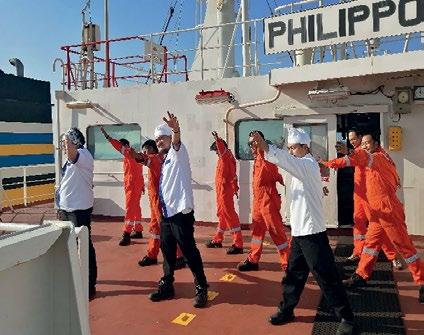
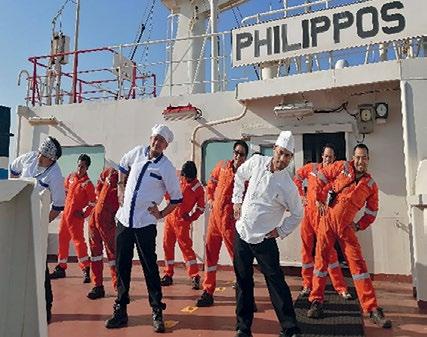
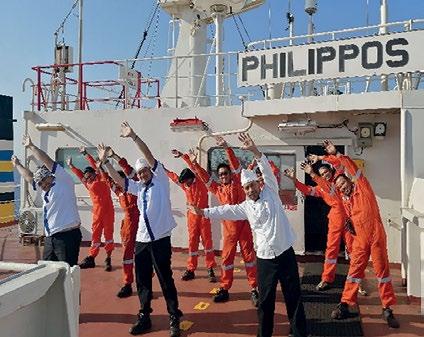

It is a pleasure to be involved in sharing onboard experiences in our Voices from the Fleet section of Wavelength. Taking this opportunity to thank all the officers and crew of MV Philippos A. for such wonderful relationships that have been built amongst crew while serving on our good vessel and the Company. Each and every successful contract on board begins by making the vessel in good ambiance to work safely, in good health and in an environmentally friendly place.
Our daily works at sea here on Philippos A. normally start by carrying out a tool box meeting by giving precious time to remind all involved in daily operations the importance of using personal protective equipment, to follow working procedures as per plan, short sharing of day to day experiences which motivates the crew to learn and improve awareness of work place hazards without hesitation to express their ideas. This is followed by stretching and brief exercise before proceeding to our daily tasks. This simply contributes to motivate the crew, preventing accident onboard, following the task actively, in good spirit and starting the day in a good working environment and more productively. This short daily habit ends with prayers paying respects and thanks to almighty God.
Such good stories and valuable lessons to be learned make our contract much easier.
We wish you safety and good health.
“Be aware, take care, every time, everywhere”. This is a helpful
and get home to our families safe and sound. I am truly grateful for the
18 Issue 82-December 2022
Registries and Countries
Panama

The Registry
The Panama Shipping Registry dates back to 1925, making it one of the first to be established. Today, it is the largest fleet registry, a position which has been held since 1993. This position applies to both the number of vessels and the tonnage handled by the Panama Shipping Registry. According to UINCTADstat (2021), this Registry has over 6,600 merchant vessels on its books with a tonnage of more than 344 million dwt. In addition, since the Registry has a no minimum tonnage policy, there are many other types of vessel that are registered in Panama. As regards the nationality of ownership, Japan is at the top of the list with just over 30% of the total. In terms of tonnage, Japan is also top of the list, which is hardly surprising as at the beginning of 2021 more than half the ships owned by Japanese entities were registered in Panama. Next on the list in terms of vessel numbers is China followed by Greece. With regard to tonnage South Korea occupies the second spot with Greece and China in third and fourth positions respectively. The Panama ship Registry, which represents about 16% of the world fleet, is a signatory of all major maritime conventions, and has been a Category A IMO member since 2002, after having been reelected in 2018. The Registry has been on the Paris MoU white flag list for more than ten years, and is also on the Tokyo MoU white flag list. As would be expected from the shipping registry leader, the Panama Registry offices offer round the clock service.
The Country Panama is situated on an isthmus of 29,119 sq. miles (75,417sq. km) that links Central and South America. The population is just over 4.3 million, one third of whom live in hamlets or isolated dwellings. The majority of those who live in the countryside are engaged in subsistence agriculture which is facilitated by rich volcanic soil. The country’s main crops are sugarcane, corn, oranges, bananas and rice. In addition, there are numerous cattle farms, the largest of which are located in the south-western savannahs. As regards fishing, there has been a fairly rapid development of commercial enterprises in recent years. In the Gulf of Panama anchovy and herring comprise the bulk of the fish caught, while shrimp that are exported make up a substantial proportion of the rest of the catch. On the Atlantic side, lobsters are highly prized. The capital, Panama City, which has a population of just under 2 million in the metro area, comprises a unique mix of modern high rise buildings and whitewashed bungalows. The vibrant culture in the country has been described as a mix of African, Native American, Spanish and North American, while there is a strong Chinese influence in the food culture of Panama. Two of the many delicious dishes on offer are the national dish, sanocho, a vegetable and chicken broth with a side plate of rice, and guacho, which is a soupy rice dish with vegetables, yucca and either meat or seafood.
Even though Panama occupies a relatively small area, it is home to a diverse wildlife population that flourishes in a wide variety of habitats. These include tropical rainforests, cool montane forests,
tidal lands, mangroves, coral reefs, savannahs and beaches. Some of the mammals that are thought to have arrived in Panama as it served as a land bridge for migratory species are anteaters, armadillos, deer, jaguars, sloths and tapirs. Among the sea creatures that can be seen are humpback whales, sea turtles, orcas, reef sharks, angelfish and damselfish.
Sanocho – Panama’s national dish, one of many culinary delights the country has to offer. Source: www.chefspencil.com

Harpy eagle: Panama’s national bird. Source: www.audubon.org Although the lists of land mammals and aquatic life are impressive, they are somewhat overshadowed by avian life. With over 1000 bird species ranging in size from the tiny hummingbird to the mighty harpy eagle, the country is literally a birdwatcher’s dream. The harpy eagle, which is one of the largest raptors, is Panama’s national bird. Named after a creature from ancient Greek mythology, this forest dweller can weigh up to 20lbs (9 kg), has up to a 6.5-foot (2 m) wingspan and 5-inch (12.7 cm) talons that are larger than the front claws of a grizzly bear. One of the reasons why it was chosen as the national bird is that it is a symbol of tropical wilderness. It is a wilderness that has not been logged on a commercial scale and has, therefore, provided a safe haven for creatures of the forest.
Sources: www.britannica.com, www.maritime.gr, www.storyteller.travel.com, www.hbs.unctad.org, www.bbc.com, www.panama-psa.com, www.maritimes.gr

19 Issue 82-December 2022
Planted Corals Spawn
One of the most pressing issues in the marine environment that is directly related to the effects of climate change is the destruction of coral reefs. This problem has been particularly worrying in areas that have witnessed significant sea temperature rises that have led to widespread coral bleaching such as the Great Barrier Reef. Given the serious consequences of reefs dying, researchers across the globe have explored the possibility of growing corals in hard hit aquatic regions.
Following extensive studies, one team of marine biologists at the Reef Restoration Foundation grew several species of corals on underwater frames before transferring them to patches of bare reef. The so-called ‘coral nursery’ located off Fitzroy Island on the Great Barrier Reef was planted in 2018. Now, four years later, this work carried out by scientists and volunteers is paying off as the planted coral has spawned for the first time.
The corals that were grown on the frames were from pieces that had survived a major bleaching event. The idea, which proved to be correct, was that their resilience would make them less susceptible to sea temperature rises. The spawning occurred during on annual spectacle when a multitude of coral species spawn at the same time. Fertilization takes place on the surface, leading to the development of larvae that create new colonies of coral.
The annual event of coral spawning
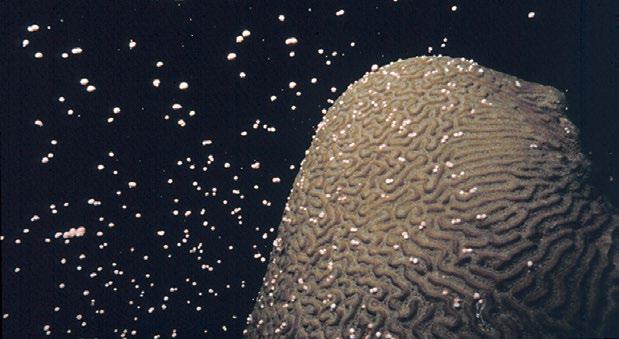
Although the success of the nursery has been hailed as a breakthrough, sustainable reef restoration in this area alone would require a massive scale-up because the Great Barrier Reef, which covers an area roughly the size of Italy, contains over 3000 individual reefs. This makes such reef regeneration a daunting task, so it is hoped that the continued establishment of coral nurseries together with efficient action to mitigate climate change will slow down, halt and reverse the decline of coral reefs.
Sources: www.theguardian.com, www.barrierreef.com
Food Culture
Pancit
Pancit, or pansit, is a name that describes well over 30 traditional noodle dishes in Filipino cuisine. In general, the name given to each of these dishes refers to the type of noodle used, but it can also relate to its origin, the ingredients used or the method of cooking. Pancit can serve both as a staple and a comfort food, and the fish can either be eaten on its own, or with white rice, pandesal bread and steamed rice cakes (puto).
The wide variety of noodles used in the dish together with the combinations of vegetables and the meat or seafood alternatives accounts for the wide range of pancit dishes. For instance, pancit canton is made with round egg noodles, whereas pancit miki is cooked using flag soft yellow egg noodles. Other noodles include thick egg noodles (pancit lomi) yellow cornstarch noodles (pancit palabok), yellow flour noodles (pancit odong), rice vermicelli (pancit bihon), wheat vermicelli (pancit misua) and bean vermicelli (pancit sotangon).
Among the vegetable ingredients commonly used to make pancit dishes are cabbage, carrots, onions, celery, green beans and snow peas. As regards the meat component, chicken, beef, pork and shrimp are the most frequently found in this wonderful dish. Along with pancit, sliced halves of calamansi (Philippine line) are served. These add a tangy flavor and offer vitamins A and C as well as potassium and calcium.
The wide range of pancit dishes can be illustrated by a comparison between two of the most popular: pancit bihou guisado and pancit lomi. The former comprises stir fried rice noodles with
Pancit Bihou Guisado


Source: www.kawalingpinoy.com
Pancit lomi Source: www.kawalingpinoy.com
carrot, green beans, mushrooms cabbage and slices of chicken, while the latter consists of thick round egg noodles braised in a thick soup with carrots, cabbage, mushrooms with slices of pork, shrimp and kikiam (pork and taro wrapped in tofu skin). Pancit lomi is indicative of the nutritious value of pancit dishes as it contains calcium, magnesium, phosphorus, B vitamins, iron, manganese, zinc and antioxidants.
In the Philippines, pancit is on offer at a vast range of outlets from markets and street vendors to office cafeterias and restaurant. This shows just how important a component it is in Filipino cuisine and how it is guaranteed to satisfy the taste buds of all noodle lovers.
Sources: www.lifesamborisa.com, en.wikipedia.org, www.panlasangpinoy.com, www.manilaspoon.com
Environmental
20 Issue 82-December 2022
Egyptian Ships and Boats
In ancient Egypt, journeys over land were both long and arduous, so the Nile became the country’s main highway, and travelling by river or sea became the norm. There was a range of craft used at that time from the smallest that were made from papyrus reeds to the mightily impressive super vessels of the age.
Among the latter group was the obelisk barge, which at over 300ft (90m) long and more than 100ft (30m) wide was able to transport massive stone structures from Aswan to places such as Karnak, which is the site of the Hatsheput Obelisk. This stone structure weighing over 350 tons is 97ft (30m) tall, making it the largest surviving obelisk from the era of the ancient Egyptians. The aforementioned barge, which was made from cedar, was able to carry 2000 tons of stone. When fully loaded, its displacement was a staggering 7300 tons. In order to provide the strength needed to transport such a massive cargo, the vessel comprised several decks with beams that protruded through the hull. As regards propulsions, it is believed that it was towed by up to 30 boats, which must have been an incredible sight for those gathered on the banks of the Nile to witness its journey to the north.
the planks were pulled together to form a watertight connection. In the Khufu ship, the rope was made of plied vegetable fibre and the lashings made for a remarkably rigid structure to be formed. This method of building was widely known and utilized during the Bronze Age (some 3000 years ago), but the Khufu ships lashings were slightly more sophisticated as they did not go all the way through the planks. Instead, they were buried away inside the timber. It is also thought that beeswax may have been used to make the ship more waterproof, but this material probably degraded over time, leaving non for the archaeologists to discover. Apart from travelling on the Nile, the ancient Egyptians cruised the seas, carrying cargo throughout the known world. Evidence of this appears in reliefs on the walls of a temple at Deir el-Bahari. Images on these walls depict trading expeditions to the land of Punit, which is now called Somalia, hundreds of miles away along the Red Sea. There is also evidence of huge vessels carrying hundreds of tons of cargo in the Mediterranean region. Although these super vessels of ancient Egypt no longer exist intact, there are still boats to be found on the Nike that have changed little in over 1000 years. More specifically, the felucca, a swift, light sailboat that is used to transport both goods and people, can be seen all along the Nile and in the protected waters of the Red Sea. Although these iconic boats made entirely of wood like their predecessors, their structure is basically the same as it was in ancient Egypt. The felucca’s lateen sail or two sails, woven from natural fibres still grace the country’s water lifeline, maintaining the boat’s strong association with the River Nile.
The Khufu ship in the Solar boat museum

Prior to the mid-twentieth century, just how such a vessel had been built was merely speculative. Then, in 1954, over 80 blocks of stone were discovered. This led to an excavation which revealed a dismantled ship under the stone blocks. The ‘ship’ was well preserved and over 650 main pieces of wood and another 574 pieces were found. It is believed that the ship had been taken apart to be buried with Khufu, the Pharaoh of Egypt who built the Great Pyramid at Giza. The Khufu ship which was painstakingly reassembled and is now housed at the purpose-built Giza Solar boat museum was over 142ft (43.4m) long as its planks had been carved into shape. There were no pins or nails found. Instead, the planks were held together with fibre stitches. These tightened after getting wet so

As regards the structure of the felucca, there is no keel as such. Instead, there is a heavy centre plate that allows it to sail safely in shallow waters, or to be raised over sandbars whenever necessary. There is an open deck, which is covered by cushions and pillows when passengers are on board and a canvas shelter for protection from the heat. The felucca can carry up to ten passengers along with two or three crew members. Apart from catering for travellers who wish to sail the Nile as those who did during the time of the Pharaohs, the felucca can be booked for a dinner reservation, especially in Cairo where it offers a popular dining experience. The exploits of ancient Egyptians on water may not be as extensively documented as their other phenomenal achievements, but they are still fundamental to the country’s culture. Indeed, without such vessels as the obelisk barge some of the landmarks known across the globe would not be visible today.
Sources: www.youtube.com, en.wikipedia.org, www.historymuseum.ca www.egyptianstreets.com, www.gadventures.com, www.brighthubengineering.com

Culture Corner
Two Feluccas on the Nile. Source: www.gadventures.com
21 Issue 82-December 2022
The Khufu ship shortly after its discovery
Bodies of Water Tasman Sea
Named after Abel Tasman, the Dutch explorer who navigated it in 1642, the Tasman Sea is part of the south-west Pacific Ocean that lies between Australia and New Zealand. This body of water was mainly shaped by the break-up of the supercontinent Gondwana which led to the formation of an undersea ridge some 85-55 million years ago. Known to Australians and New Zealanders as the ‘Ditch’, the Tasman Sea covers an area of some 900,000 square miles (2,300,000 sq. km) and has a maximum depth of about 18,000 ft (5,500m).
There are two predominant currents in the Tasman Sea. The firs tis the southerly moving East Australian current, which is fed by the South Equatorial current and trade winds. The second is the Eastern Tasman Sea surface current, which is controlled by a stream from the Pacific Ocean. These currents make the southern part of the Tasman Sea temperate, and the northern part subtropical. From July to December wind strength does not reach storm level. Indeed, they were once a great advantage for ships sailing from Europe to this region during the Age of Sail for much of the year. However, the Tasman Sea can turn fair winds into violent storms as it is situated in the path of very strong westerlies known as the ‘roaring forties’. Well below the surface, on the sea bed, there is a plethora of silicon dioxide originating from the shells of prehistoric creatures. Under the sea, these shells have turned into a biogenic ooze that is carpeted with plankton and other microorganisms. The Tasman Sea is crossed by shipping lanes between South-East Australia, Tasmania and New Zealand. The major ports that service the shipping industry include the Port of Sydney, Darling Harbour, the port of Newcastle, Port Nelson and the Port of Auckland. Vessels carry numerous products, among which are chemicals, metal ores, agricultural produce and livestock. Cruise ships also frequent the Tasman Sea during periods when the sea and wind conditions are calm. Additionally, other water craft commonly found in this body of water are fishing vessels. Surveys carried out by deep sea research ships have identified some 500 species of fish and 1300 species of invertebrates. Evidence of a long extinct marine creature has also been discovered in the form of a megalodon tooth, the size of which indicates that this fiercesome predator was between 35-70 ft (10-20m) long. Among the species fished commercially are cod, flounder, mackerel, anchovy, pilchards and tuna. Of particular importance to the Tasmanian economy are rock lobster and abalone.

Source: en.wikipedia.org
governments have established no-catch areas in the form of marine reserves to protect endangered species such as black cod. Furthermore, Mission Blue has lent its support by creating a Hope Spot in the Tasman Sea.
Megalodon tooth found in Tasman Sea when compared to Great White

As in many regions, overfishing has created problems and several fish species are in decline. In order to address this issue, local
Port of Auckland – one of the ports that directly serves the Tasman Sea. Source: www.aucklandcouncil.govt.nz

Given the nature of Australians, and New Zealanders, it comes as no surprise that crossing the ‘Ditch’ is regarded as a challenge rather than something to shy away from. Two memorable crossings were achieved by a four-man Australian rowing team who achieved the feat in 31 days in 2007, and a two-man kayak crew from Australia (Cass and Jonesy), who made the crossing in 60 days a year later. Unfortunately, not all attempts end well, with some failures resulting in tragedy. Although much is known about the Tasman Sea, it is unlikely that this body of water has given up all it secrets. One previously unknown feature was discovered in 2012, when scientists using deep-diving ocean gliders came upon a 650 ft (200m) tall, 25 mile (40km) wide disc of water. This water that originated in the Bass Strait travelled hundreds of miles east and remarkably remained undiluted. Six years later, researchers discovered a long chain of ancient underwater volcanoes about 250 miles (400km) east of Tasmania. Some of these huge seamounts rise from depths of three miles (5000m) below the surface, and reach heights of up to 9,800ft (3000m). What is more, this chain is thought to be a superhighway for migrating whales. These two relatively recent findings would seem to indicate that this unique sea will continue to surprise those who study it.
Sources: www.britannica.com, en.wikipedia.org, www.marine-insight.com www.fishing.tas.gov.au, www.mpi.govt.nz, www.livescience.com, www.australiangeographic.com
shark tooth. Source: www.britannica.com
22 Issue 82-December 2022
1. Make the names of two countries using all the letters in the following sentence: PALE BALD HENS NAG.
2.The letters in the chemical symbols for gallium, iron, praseodymium and selenium can be rearranged to form the name of a historic vessel. What is the name of the vessel?
3. My name rhymes with where one skates, and where one can wash one’s plates. If I am too weak to bear the loads I take, then what I am part of is likely to break. What am I?
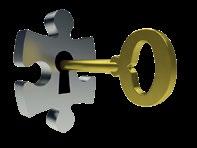
4. Which three-letter word can be used to complete the following words:
AT_ _ _ _ IVE, RE _ _ _ _ ION, PO _ _ _ _ IAL and LA _ _ _ _ ?
5. Carla’s favourite colour is turquoise and her favourite fish is the sturgeon. She has travelled extensively and the countries she enjoyed
1. Harrison Okene’s survival at sea story unfolded about 20 miles from the coast of which African country?
A. Angola B. Nigeria C. Ghana D. Gabon
2. Which luxurious liner sank after colliding with the MS Stockholm?
A. SS Normandie B. SS Morro Castle
C. SS Admiral Nakhimov D. Andrea Doria
3. By what name are the female freedivers of Japan known?
A. Ama B. Bajao C. Haenyeo D. Haida
4. How many of the twenty one countries that border the Mediterranean Sea contain seven letters?
A. Four B. Five C. Six D. Seven
5. The Port of Duluth is located on the westernmost tip of which of the Great Lakes?
A. Huron B. Eerie C. Superior D. Michigan
6. What is the national boat of the Philippines called?
A. A phinisi B. a dhow C. a drua D. a balangay
visiting most are Cambodia and French Guiana. She also has a favourite number, which is forty eight. By the same token which fruit would she prefer to eat a grapefruit or a pomegranate? Why?
6. Which five-letter word can be placed after the words to the left and before the words to the right?
BROWN - - - -STRUGGLE SOLAR PLAY NUCLEAR TOOLS
7. In 6 steps change the word HAND to FOOT by changing one letter at a time to form intermediate words.
7. Where are the headquarters of the IMO located?
A. New York B. London C. Geneva D. Seoul
8. Which of the following is NOT one of the 5 Principles of Human Behaviour?
A. blame fixes nothing B. context drives behaviour C. response matters D. complacency causes mistakes

9. What is the first step in the sequence of cleaning cargo holds for grain cargoes?
A. sweeping the cargo holds B. applying chemicals C. prewashing with sea water D. rinsing with sea water
10. The Seawise Giant was the largest ship ever built. What was the weight of her rudder?
A. 170 tons B. 190 tons C. 210 tons D. 230 tons
Answers at the foot of the page
Answers
8. What is the next number in the following sequence: 0, 1, 1, 2, 4, 7, 13, 24, 44 ? TEST YOUR BRAIN answers: 1. Bangladesh, Nepal 2. Graf Spee 3. A link 4. TENT 5. A pomegranate (her preferences contain at least four letters that are consecutive in the alphabet e.g. r,s,t,u) 6. Power 7. HARD, LARD, LORD, FORD, FOOD, FOOT 8. 81 QUIZ answers: 1.B 2.D 3.A 4.C 5.C 6.D 7.B 8.D 9.A 10.D
Test Brain your
KEYWORD answers: 1. Regulation 2. RazorWire 3. Exercise 4. HopeSpot 5. Fitzroy 6. Felucca 7. Japan 8. Workloads Keyword: PREPARED Answers at the foot of the page Answers at the foot of the page Keyword G L X C S O N Z W H S T I Z L C A A N O R O S Find a keyword associated with several articles in this issue by solving the clues and rearranging the letters in the boxes with black borders. Hint: Ready 1. The EEXI is a new one (10) 2. Used to deter pirates (5,4) 3. Onboard morning activity (8) 4. The Tasman Sea has one (4,4) 5. Coral nursery planted off this island in 2018 (7) 6. Sailboat of the Nile (7) 7. Country topping Panama’s registry (5) 8. Consider these when assessing risk (9) Quiz 23 Issue 82-December 2022
Survival at Sea
The Baileys
In 1971, Maurice and Maralyn Bailey made the decision to emigrate to New Zealand. In those days leaving the UK for a new life in Australia or New Zealand was not that unusual, but the way in which the Baileys intended to reach their destination certainly was. They chose to make their journey an adventure by travelling over 14,000 nautical miles in a yacht by themselves even though they had little sailing experience.
Two years after making their momentous decision, Maurice and Maralyn bought a 31-foot (9.4 m) yacht and named her Auralyn. During those two years the couple read up on survival at sea strategies and bought all the necessary equipment and supplies for their voyage.
The course taken after the Bailey’s boat sank.

Source: www.paradise.docastaway.com
After their provisions had run out, their situation became even worse as currents took them away from established maritime routes. Despite their best efforts to row against the currents, they found themselves drifting towards a less hospitable region of the Pacific Ocean, where conditions forced them to bail out water continuously. They also had to catch turtles and birds that landed on the lifecraft for their blood and meat in order to survive. In addition, they used safety pins to catch fish. They hated killing these sea creatures, but circumstances dictated that they had to.
By the time they left Southampton for Spain on the first leg of their journey, they felt confident they could rise to the challenge they had set themselves. Their confidence was justified when they managed to cope with the expected storms they encountered after departing the Canary Islands. After reaching the Caribbean Sea, they forged on to the Panama Canal and spent a couple of days resting in Panama City. Refreshed, they headed for the Galapagos Islands. Again their journey continued to be uneventful until a sperm whale appeared out of nowhere and struck their small yacht. The collision resulted in severe damage to the yacht in the form of a large hole in the hull just below the water line. Immediately, Maralyn started using the water pump while Maurice attempted to plug the hole with cushions and clothes.
The Bailey’s, their liferaft and their rescuers
Source: www.paradise.docastaway.com
Their next problem appeared when their lifecraft, which was not designed for long-term use, began to exhibit signs of deterioration, including a systematic loss of pressure. This meant that pumping air into their inflatable as well as bailing out water were non-stop activities, especially on stormy days. As a result, rest periods became fewer and lasted for less time. This predicament hit Maurice particularly hard, and he began to lose hope. Fortunately, Maralyn remained positive and her reassurance helped Maurice come round to her way of thinking.
Soon after the strike, the couple realized that they would have to abandon Auralyn. They released the lifeboat and inflated the dinghy before grabbing as much food, water and equipment as they could. Maralyn, a non-swimmer, had to wade through the rising water to reach the cupboards. Eventually, when they could salvage no more, they got onto the lifecraft and watched their boat disappear below the waves.
Although the yacht sank relatively quickly, they managed to transfer supplies and equipment to the lifecraft. Among the items they managed to save were cans of food, mainly beans, water for twenty days, maps, a sextant and compass, safety pins, two buckets to collect rainwater, scissors, binoculars, six flares, a box of matches and a bag of clothes. They hoped that what they had saved would be enough to see them through until they reached the Galapagos Islands.

Unfortunately for the Baileys, the Galapagos Islands turned out not to be their destination as their lifeboat had drifted north away from them. During their first few weeks adrift, they lived off the food and water they had saved. They also spotted several merchant vessels, but as they were so low in the water, they were not spotted by these ships. They did try to gain the attention of those seamen on board by lighting the flares they had retrieved from the emergency kit but none of them worked.
Whenever they saw a ship, which was not very often, they tried to get noticed by whatever means possible. On one occasion, they burnt clothes in a turtle shell but the wind dispersed the smoke so their efforts were in vain. Then, on the 117th day after the whale strike, they caught sight of a vessel and started signaling. At first, there was no indication they had been spotted, so they sat down in despair. However, their mood soon changed when the vessel, a South Korean fishing boat, changed course towards them. This happened on the 30th June 1973, the day when their ordeal ended.
As they boarded the rescue vessel, they were overwhelmed and sobbed uncontrollably. They had lost around 40 lb. (18.1 kg) each, could not walk properly, had ulcers and anemia as well as sunburn. Apart from that they were in reasonable shape. After their basic health check aboard the tuna fishing vessel, they were fed and taken to Honolulu for treatment.
Maurice and Maralyn Bailey, recovered quite quickly, and as soon as they felt well enough they took a trip to South Korea, where they thanked their rescuers in person. When they returned to the UK, they were no longer in the media spotlight. They lived quite a solitary existence, and reflected on their interaction with the sea creatures that accompanied them. Their intense dislike of having to kill some of them led them to become vegetarians. They revealed that they regarded these animals as their friends to the Spanish explorer, Alvaro Cezero, who was the only person to have any real contact with the couple. Maralyn died in 2002 at the age of 61. After that, Maurice lived as a recluse until his death in 2018 aged 85.
Sources: www.youtube.com, www.nzherald.com.nz, www.paradise.docastaway.com





 Dear seafarers,
Dear seafarers,





 By Konstantina Fountouli
By Konstantina Fountouli







 Figure
Figure









 By George Koutroubousis, CSO
By George Koutroubousis, CSO

































 Jayson C. Padilla, Chief Officer / MV Philippos A
Jayson C. Padilla, Chief Officer / MV Philippos A



















